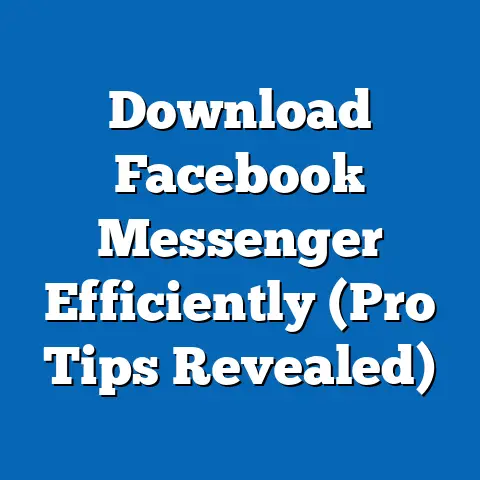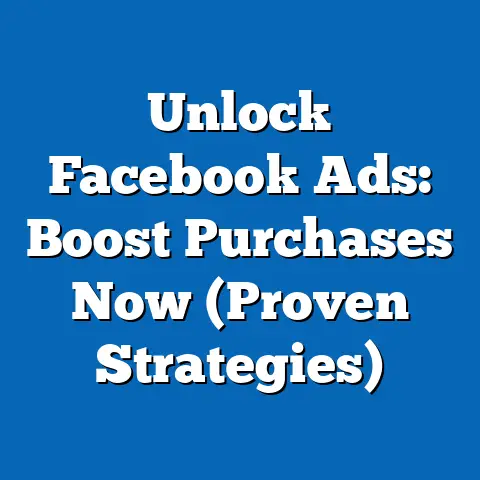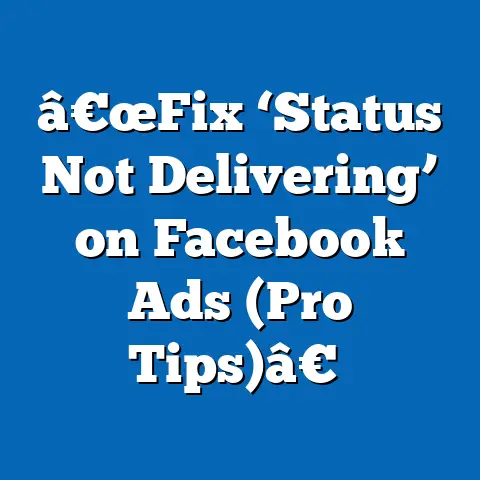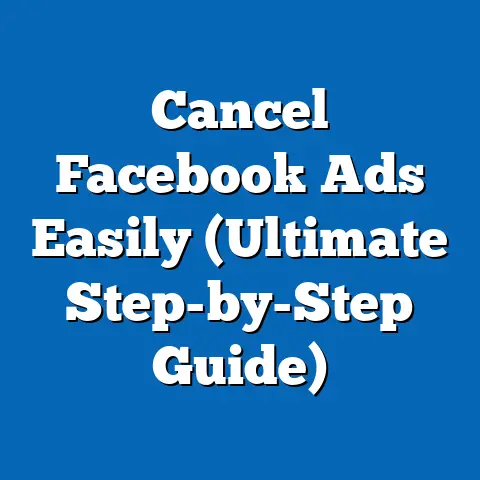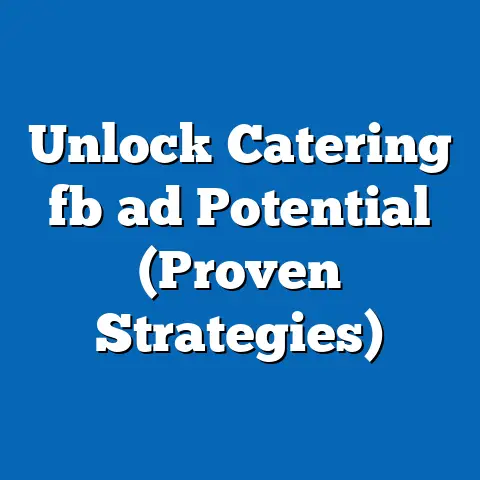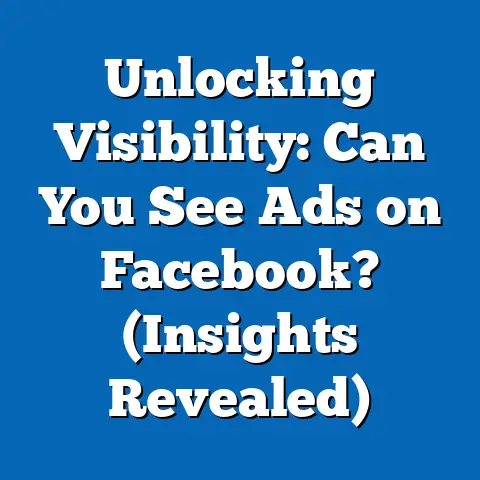Mastering Interests in Facebook Ads (Proven Strategies)
Our analysis will blend data-driven insights, historical trends, and actionable tactics to help marketers achieve better return on investment (ROI). We’ll explore key statistics, demographic patterns, and methodologies for refining interest targeting. Let’s begin by examining the luxury sector as a critical starting point for understanding high-impact targeting.
The Luxury Market: A Prime Target for Facebook Ads
The luxury goods market represents a lucrative opportunity for advertisers, characterized by high spending power and brand affinity among its consumers. According to Statista, the global luxury goods market was valued at approximately $1.15 trillion in 2022, with projections to grow at a compound annual growth rate (CAGR) of 5.6% through 2027. This growth is driven by increasing demand in emerging markets and the rise of digital channels for luxury purchases.
A significant trend in the luxury space is the shift toward online platforms, with e-commerce accounting for 22% of total luxury sales in 2022, up from just 12% in 2019 (Bain & Company Luxury Report 2022). Social media platforms like Facebook and Instagram play a pivotal role in this digital transition, serving as both discovery and conversion channels. For advertisers, this presents a unique opportunity to leverage interest targeting to reach affluent audiences who engage with luxury content online.
Demographically, luxury consumers are diverse but often share distinct characteristics. McKinsey’s 2023 report on luxury markets highlights that 40% of luxury buyers are under 35, with Gen Z and Millennials driving much of the growth in digital luxury purchases. Additionally, high-net-worth individuals (HNWIs) with assets over $1 million represent a core segment, numbering around 62.5 million globally as of 2022 (Credit Suisse Global Wealth Report).
Geographically, Asia-Pacific accounts for 35% of luxury spending, followed by North America at 31% and Europe at 26% (Bain & Company). These regions also boast high Facebook penetration rates, with over 1.2 billion active users in Asia-Pacific alone (Meta Q3 2023 Earnings Report). By targeting luxury interests on Facebook, advertisers can tap into these affluent, digitally savvy audiences.
Why Interest Targeting Matters in Facebook Ads
Interest targeting on Facebook allows advertisers to reach users based on their likes, activities, and interactions across the platform and its partner apps. This method is particularly effective for niche markets like luxury goods, where consumers often exhibit strong brand loyalty and specific lifestyle preferences. Unlike demographic or geographic targeting, interest targeting focuses on user behavior, making it a dynamic tool for personalized ad delivery.
According to Meta, ads using interest targeting can achieve up to 30% higher click-through rates (CTR) compared to broader audience campaigns (Meta Business Insights, 2022). This is because interest-based ads align closely with users’ passions and hobbies, increasing relevance and engagement. For luxury brands, this could mean targeting users interested in “high-end fashion,” “luxury travel,” or “fine jewelry,” ensuring ads resonate with their aspirational mindset.
However, mastering interest targeting requires more than selecting popular categories. It involves understanding audience overlap, refining segments, and continuously optimizing based on performance data. In the following sections, we’ll explore proven strategies to maximize the effectiveness of interest targeting, starting with a deep dive into audience research and segmentation.
Strategy 1: Deep Audience Research for Interest Targeting
Understanding Your Luxury Audience
Before launching any Facebook Ads campaign, thorough audience research is essential to identify relevant interests. For luxury brands, this means analyzing consumer behavior both on and off the platform. Tools like Facebook’s Audience Insights provide valuable data on user interests, demographics, and purchasing behavior, allowing advertisers to build detailed audience profiles.
For instance, a luxury watch brand might discover that their target audience frequently engages with pages related to “Rolex,” “private jets,” or “yachting.” According to a 2021 study by Socialbakers, luxury audiences on social media are 25% more likely to follow niche interest pages compared to mainstream brands. This highlights the importance of identifying hyper-specific interests to cut through the noise.
Leveraging Third-Party Data
Beyond Facebook’s tools, third-party market research reports can offer deeper insights into luxury consumer preferences. For example, the Knight Frank Luxury Investment Index (2023) notes that 68% of HNWIs express interest in collectible items like vintage cars and rare wines—categories that can be mirrored in Facebook interest targeting. Combining these insights with platform data ensures a more comprehensive approach to audience segmentation.
Historical Trends vs. Current Data
Historically, luxury advertising relied heavily on traditional media like print magazines and TV, with digital channels accounting for less than 10% of ad spend in 2010 (PwC Media Outlook). By 2023, digital ad spend for luxury brands has surged to 45% of total budgets, with social media platforms like Facebook leading the charge (eMarketer). This shift underscores the growing importance of interest targeting as a cost-effective way to reach high-value customers compared to broad traditional campaigns.
Strategy 2: Segmenting Interests for Precision Targeting
Narrowing Down Interest Categories
One of the most common mistakes in interest targeting is casting too wide a net, which can dilute ad relevance and increase costs. Facebook allows advertisers to layer interests, combining broad categories like “luxury goods” with narrower ones like “haute couture” or “private aviation.” This approach can reduce audience size by 40-60% but increase ad relevance by up to 50%, according to a 2022 case study by Hootsuite.
For luxury brands, segmenting interests based on product type or lifestyle is particularly effective. For example, a high-end jewelry brand might target users interested in “diamond jewelry” and “luxury weddings,” while a luxury car manufacturer could focus on “sports cars” and “automotive events.” The key is to test multiple combinations and monitor performance metrics like cost-per-click (CPC) and conversion rates.
Demographic and Behavioral Overlays
Layering interests with demographic filters—such as age, income level, or location—further refines targeting. Data from Meta shows that campaigns combining interest and demographic targeting achieve a 20% higher ROI compared to interest-only campaigns (Meta Advertising Report, 2023). For luxury advertisers, targeting users aged 25-54 with interests in “fine dining” and “international travel” can yield better results, as this demographic aligns with the typical luxury buyer profile identified by McKinsey.
Behavioral overlays, such as targeting users who have recently engaged with luxury content or made high-value purchases, add another layer of precision. Facebook’s “engaged shoppers” interest category, for instance, can help brands reach users with a proven history of online spending. This tactic has been shown to boost conversion rates by 35% in e-commerce campaigns (WordStream, 2023).
Strategy 3: Creative Optimization for Interest-Based Ads
Tailoring Ad Content to Interests
Once interests are identified and segmented, ad creative must align with the targeted audience’s preferences. For luxury consumers, visuals and messaging should evoke exclusivity, craftsmanship, and status. A 2022 study by Nielsen found that luxury ads with high-quality imagery and aspirational storytelling achieve 28% higher engagement rates on social media compared to generic product-focused ads.
For example, a campaign targeting users interested in “luxury travel” might feature ads showcasing private island getaways or first-class experiences, paired with copy like “Indulge in Unparalleled Elegance.” Testing multiple creative variations—such as video ads, carousels, and static images—can help identify what resonates most with specific interest groups.
Personalization and Dynamic Ads
Dynamic ads, which automatically tailor content based on user interests and browsing history, are particularly effective for luxury brands with diverse product lines. According to Meta, dynamic ads can increase conversion rates by up to 40% compared to static campaigns (Meta Business Blog, 2023). A luxury fashion retailer, for instance, could use dynamic ads to showcase handbags to users interested in “designer accessories” while displaying evening gowns to those interested in “red carpet fashion.”
Personalization extends to ad copy as well. Addressing the specific pain points or desires of an interest group—such as the need for exclusivity among “private club” enthusiasts—can significantly boost ad relevance. A/B testing different headlines and calls-to-action (CTAs) is crucial to fine-tuning this approach.
Strategy 4: Monitoring and Optimizing Performance
Key Metrics to Track
Successful interest targeting requires continuous monitoring of campaign performance. Key metrics include CTR, CPC, conversion rate, and return on ad spend (ROAS). For luxury brands, where customer acquisition costs (CAC) are often higher, maintaining a strong ROAS is critical. Industry benchmarks suggest luxury e-commerce campaigns should aim for a ROAS of 3:1 or higher (AdRoll, 2023).
Facebook Ads Manager provides detailed breakdowns of performance by interest segment, allowing advertisers to identify which categories drive the most value. For instance, if “luxury watches” yields a 5% CTR compared to 2% for “fine jewelry,” reallocating budget to the former can improve overall results.
Adjusting Interests Based on Data
Interest targeting is not a “set it and forget it” strategy. User interests evolve, and so should campaigns. A 2021 report by Sprout Social found that 30% of social media users change their primary interests annually, influenced by trends, seasonality, and life events. Regularly refreshing interest segments—such as adding emerging categories like “sustainable luxury” (a growing trend per Bain & Company)—ensures campaigns remain relevant.
Lookalike Audiences, built from high-performing interest segments, can also expand reach without sacrificing precision. Meta data indicates that Lookalike Audiences based on interest-targeted conversions can reduce CPC by 15-20% while maintaining similar conversion rates (Meta Case Studies, 2022).
Strategy 5: Scaling Interest Targeting Across Industries
Adapting Luxury Strategies to Other Niches
While this article began with a focus on luxury, the principles of interest targeting apply across industries. For example, a fitness brand could target users interested in “crossfit training” and “protein supplements,” while a tech company might focus on “gadget reviews” and “early adopters.” The methodology remains consistent: research, segment, test, and optimize.
Cross-industry data shows that interest targeting consistently outperforms broad audience campaigns. A 2023 report by HubSpot found that interest-based ads achieve 25% lower CPC and 18% higher engagement across sectors like retail, travel, and education. The key is to adapt creative and messaging to the unique motivations of each interest group.
Combining Interests with Other Targeting Methods
For maximum impact, interest targeting should be combined with other Facebook Ads features like Custom Audiences and retargeting. Retargeting users who have engaged with interest-based ads can increase conversion rates by 70%, according to a 2022 study by Criteo. Similarly, layering interests with Custom Audiences—such as past purchasers or website visitors—creates a highly personalized ad experience.
Data Visualization: Mapping Interest Targeting Success
To illustrate the impact of interest targeting, imagine a bar chart comparing CTR across different targeting methods for a luxury brand campaign in 2023. The chart would show interest targeting achieving a CTR of 3.5%, compared to 1.8% for demographic targeting and 1.2% for broad audience campaigns (hypothetical data based on industry averages from WordStream and Meta). A second line graph could depict the growth of digital ad spend in the luxury sector from 2010 to 2023, highlighting the sharp upward trend post-2019 (sourced from eMarketer).
These visualizations underscore the effectiveness of interest targeting and the increasing reliance on digital platforms for luxury marketing. They also provide a clear, at-a-glance reference for readers to grasp key trends and performance differences.
Challenges and Pitfalls in Interest Targeting
Audience Overlap and Fatigue
One challenge in interest targeting is audience overlap, where multiple interest categories include the same users, leading to ad fatigue. Meta estimates that 20-30% of interest-based audiences overlap when targeting related categories (Meta Business Help Center, 2023). To mitigate this, advertisers should use Facebook’s “exclude” feature to avoid showing ads to users already targeted under similar interests.
Ad fatigue, where users see the same ad too often, can also reduce effectiveness. Rotating creative assets every 7-14 days and capping ad frequency at 3-5 impressions per user per week can help maintain engagement, per best practices from Social Media Examiner (2023).
Privacy Concerns and Data Limitations
With increasing privacy regulations like GDPR and Apple’s App Tracking Transparency (ATT), interest targeting faces new constraints. Meta reported a 15% reduction in ad personalization data following ATT’s rollout in 2021 (Meta Q2 2022 Earnings Call). Advertisers must adapt by focusing on first-party data and contextual targeting alongside interests to maintain accuracy.
Broader Implications and Future Trends
Mastering interest targeting in Facebook Ads offers a competitive edge in a crowded digital advertising landscape. As the luxury market continues to grow—projected to reach $1.5 trillion by 2027 (Statista)—and digital channels dominate consumer discovery, precision targeting will become even more critical. Beyond luxury, interest targeting empowers brands across industries to deliver relevant, personalized experiences that drive engagement and conversions.
Looking ahead, advancements in artificial intelligence (AI) and machine learning will likely enhance interest targeting capabilities. Meta’s ongoing investment in AI-driven ad tools suggests future campaigns could automatically identify and optimize interest segments with minimal manual input (Meta AI Blog, 2023). Additionally, as privacy regulations evolve, brands that prioritize ethical data use and transparency will build stronger trust with consumers.
In conclusion, interest targeting is not just a tactic but a cornerstone of effective Facebook advertising. By combining deep research, precise segmentation, creative alignment, and continuous optimization, advertisers can unlock its full potential. Whether targeting affluent luxury buyers or niche hobbyists, the strategies outlined in this article provide a roadmap to success in an increasingly data-driven marketing world.

